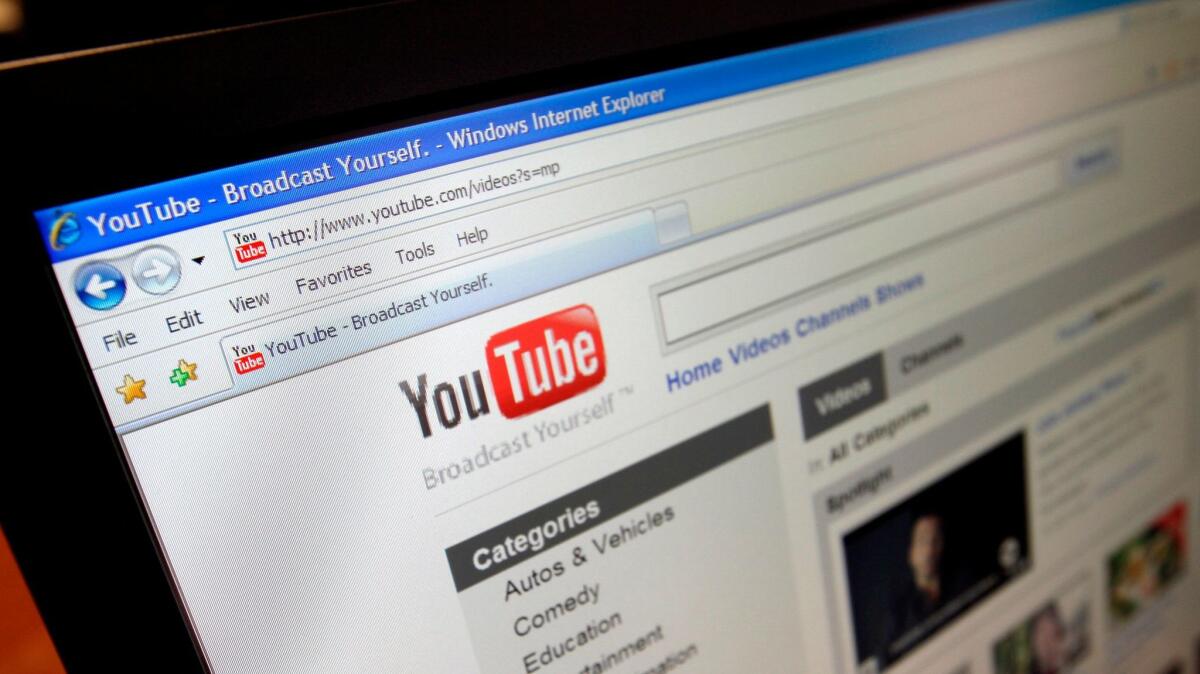Opinion: How a rigid fair-use standard would harm free speech and fundamentally undermine the Internet

- Share via
Fair use is copyright law’s safety valve, protecting our ability to make social, political and cultural commentary and criticism. It is a societal asset we could not culturally live without, and its adaptability is its strength. If a documentary filmmaker wants to discuss portrayals of gay people in popular media in the 1990s, fair use would allow them to present film and television clips. If a videogame reviewer wants to warn gamers that a new title is full of glitches, fair use lets them. If a journalist wants to analyze the truthfulness of a politician’s statements in a prepared speech, fair use allows them to quote that politician.
Anyone who creates content — from amateur filmmakers to Hollywood studios — relies extensively on fair use.
In a recent Times op-ed article, Jonathan Taplin of the USC Annenberg Innovation Lab claimed that an “ambiguous“ fair use definition is emboldening users of new technologies to challenge copyright infringement allegations, including takedown notices. He proposes rewriting fair use to limit reuses of audio or video clips to 30 seconds or less, a standard he mysteriously claims is “widely accepted.”
Without flexible fair use, many technologies wouldn’t exist, and we wouldn’t be able to find things on the Internet using tools like image search engines.
In fact, this is not a widely accepted standard, and weakening fair use in this way will not address copyright infringement concerns on the Internet. It would hurt the music, film and TV industries as much as it would hurt individual creators.
Without flexible fair use, many technologies wouldn’t exist, and we wouldn’t be able to find things on the Internet using tools like image search engines. In the 1980s, the newly invented VCR narrowly escaped the scrapheap of history (or at least delayed its visit) when the Supreme Court, in a 5-4 decision, recognized the importance of protecting consumers’ right to record and play back television shows. The movie industry’s fears of the VCR were quickly assuaged when home video became a lucrative new market. If the fair use standard was limited to 30 seconds in the early 1980s, what would have happened to the VCR, or the DVR, for that matter? Arbitrarily rigid standards would have ended or fundamentally altered these technologies.
Later on, in the early days of the Internet, image search engines’ existence was repeatedly threatened by copyright lawsuits. Rather than make all image search illegal, courts turned to fair use, finding that search technology that makes a thumbnail of a photo so that we can find content on the Internet was worth protecting.
Fair use evolves with new reuses of content and new technologies. Take music, which is highly protected by copyright law. It is a fair use to make a digital copy to your computer of an album you purchased so you can listen to it on that device. However, it may not be fair use to include five seconds of song sample in your own music that you’re creating. In the film and video world, fair use as-is can protect the use of 45 seconds of a politician’s speech in a documentary, or the use of two minutes of videogame footage to warn gamers of programming flaws. On the other hand, releasing 15 seconds of an unreleased film or video game simply to give audiences a sneak preview would be copyright infringement. Taplin’s arbitrary “30 second” cutoff would ruin many consumer and highly transformative uses.
Fair use is inextricably linked to our 1st Amendment right to free speech. We are careful with fair use because it’s the primary way consumers, creators and innovators share new ideas. It’s a good thing, and it is worth protecting.
Art Neill, a professor at California Western School of Law, is the founder and executive director of the nonprofit group New Media Rights.
This piece is part of Blowback, our online forum for rebuttals to The Times. If you would like to write a full-length response to a recent Times article, editorial or Op-Ed and would like to participate in Blowback, here are our FAQs and submission policy.
Follow the Opinion section on Twitter @latimesopinion and Facebook
More to Read
A cure for the common opinion
Get thought-provoking perspectives with our weekly newsletter.
You may occasionally receive promotional content from the Los Angeles Times.





